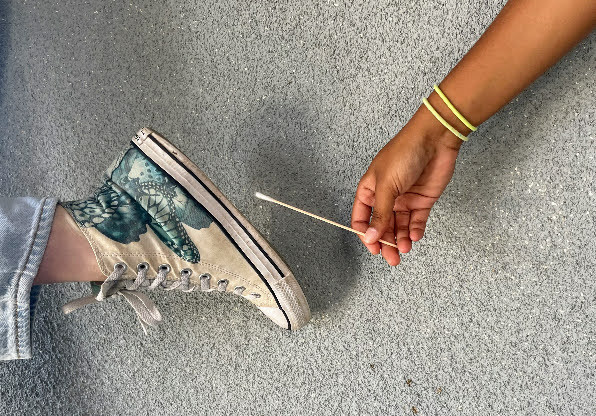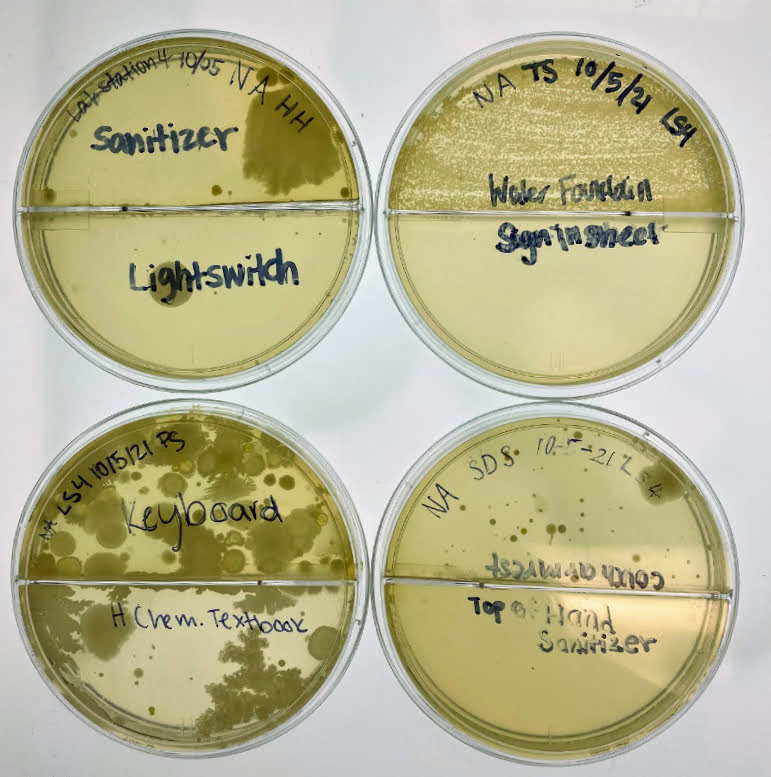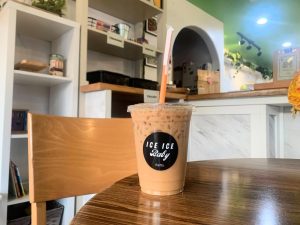Surveying the campus

Bioscience survey student swabs the bottom of a shoe for bacterial infection.
October 21, 2021
On Oct. 7, Cohort 18 Bioscience Survey students of Foothill Technology High School (Foothill Tech) split into groups and swabbed the campus for bacteria. To test the cleanliness of different areas of the school, each lab table was assigned a different section of the campus to survey. The procedure started off as students chose an item that they wanted to test, using their sterile water in its test tube, one nutrient agar plate and swabs.
After the materials were ready, swabs were taken out of their packaging and dipped into the sterile water. Then, the swabs were streaked across the surfaces being tested. In order to transfer the collected bacteria to the agar plate, the lid of the plate was slightly lifted to minimize contamination as the swab ran in zigzag motions across the surface of the agar.
Once each student ran two bacteria tests of their choice, the plates were placed in an incubator set at 37 degrees Celsius for 48 hours.
An incubator is an enclosure that is insulated to a certain temperature that allows the bacteria to thrive at a regulated temperature. In the experiment, the incubator was used for the bacteria to grow so that students could witness the bacteria visually.
After 48 hours, the bacteria was vividly displayed across each half of the agar plate. By examining the amount of bacteria, Cohort 18 was able to determine the bacterial hot spots on campus.
The item with the most infection was the bottom of a student’s shoe, which traveled across campus and was exposed to all infected elements throughout the school day.
The top three surfaces carrying the most bacteria, including the shoe, was a school keyboard and a classroom door handle. We can infer that these are highly touched surfaces that rarely get cleaned, so the bacteria amount increases and continues to grow.
Several freshmen students with no prior knowledge of the experiment were interviewed on what they thought would be the most highly infectious zone.
Rowan Murphy ‘25 believed it was, “definitely the bathrooms.” Aditi Shanbhag ‘25 agreed, commenting, “I would say the bathrooms on the right side of the quad [are the most infectious] because it’s a lot smaller and capped.”
The majority of people who attend Foothill Tech would come to the conclusion that the bathrooms would be the most contaminated area. However, after the lab results were shown, there was evidence that pointed to a low concentration of bacteria in the bathrooms. Restrooms are cleaned on a daily basis, whereas highly-touched items such as doorknobs and benches can get overlooked even though they’re potentially hazardous zones.
As Survey students, we believe that this lab teaches students the importance of awareness when it comes to protecting themselves from disease. After seeing lab results, it provided motivation for students to continue to wash hands correctly and frequently to help prevent sickness.
In a pandemic, people must be conscious of the everyday risk and exposure that is present everywhere and anywhere you go. Coronavirus predominantly spreads through the emitted particles of germs that comes out of one’s mouth. In a highly populated area like Foothill Tech, spreads of bacteria happen everyday. This examination of bacteria should make people be more aware of COVID and motivate them to follow the health guidelines at all times.
Not only should Survey students be able to examine the risk of infection, but every student should know about the roaming bacteria on their school campus and how it affects them. Along with this, people on campus need to take extra precautions for what they come in contact with, especially in this era where COVID-19 continues to spread and threaten lives everyday.

















Tessa Shinden • Oct 22, 2021 at 10:56 am
claire and nisha slayed as always.